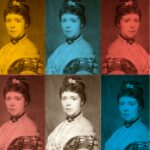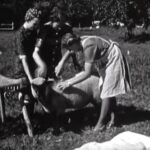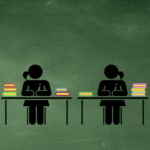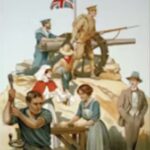![braham Bach: Das Zehen Jährige Alter,1660, Städtische Kunstsammlungen Augsburg, abgebildet in: Die Lebenstreppe. Bilder der menschlichen Lebensalter [Kat.], Köln 1983, S. 22. - via Website](https://salon21.univie.ac.at/wp-content/uploads/2023/04/Lebenstreppe-150x150.jpg) Arbeitskreis Gender & Pietismus; Ulrike Gleixner und Xenia von Tippelskirch (Web)
Arbeitskreis Gender & Pietismus; Ulrike Gleixner und Xenia von Tippelskirch (Web)
Zeit: 04.-06.05.2023
Ort: Herzog-August-Bibliothek, Wolfenbüttel
Neben geschlechtlicher und religiöser Zugehörigkeit spielt in der Frühen Neuzeit das Alter eine tragende Rolle für die Differenzierung gesellschaftlicher Gruppen und die Ausgestaltung konkreter Lebensentwürfe. Die Tagung unter der Leitung von Ulrike Gleixner (Wolfenbüttel) und Xenia von Tippelskirch (Frankfurt am Main) möchte die Wechselbeziehungen bzw. Intersektionen von Alter und Geschlecht in den Blick zu nehmen. Dabei soll das Augenmerk nicht nur auf das hohe Alter, sondern auf sämtliche Lebensphasen gerichtet werden.
Programm (PDF)
Sektionen: Ordnung des Lebens | Ability/Disability | Selbstwahrnehmung und Self-Fashioning | Lebensabschnitte
Keynote: Christina Petterson: Age as pieces of heavenly time in the world
Quelle: HSozuKult

 Zentrum Gender & Diversity Hamburg: Michaela Koch; Univ. Hamburg/Forschungsnetzwerk »Widerständige Praxen«: Jara Schmidt; Albert-Ludwigs-Univ. Freiburg: Clara Rosa Schwarz; in Koop. mit Spinnboden – Lesbenarchiv und Bibliothek, Berlin & DENKtRÄUME – Frauen*bildungszentrum, Hamburg
Zentrum Gender & Diversity Hamburg: Michaela Koch; Univ. Hamburg/Forschungsnetzwerk »Widerständige Praxen«: Jara Schmidt; Albert-Ludwigs-Univ. Freiburg: Clara Rosa Schwarz; in Koop. mit Spinnboden – Lesbenarchiv und Bibliothek, Berlin & DENKtRÄUME – Frauen*bildungszentrum, Hamburg  Präsentationen „Wien – Berlin. Hofgesellschaften DIGITAL“
Präsentationen „Wien – Berlin. Hofgesellschaften DIGITAL“  Project „Light On! Queer Literatures and Cultures under Socialism“, Univ. of Regensburg, Tatiana Klepikova
Project „Light On! Queer Literatures and Cultures under Socialism“, Univ. of Regensburg, Tatiana Klepikova  European Rural History Film Association (ERHFA)
European Rural History Film Association (ERHFA)  fernetzt. Verein zur Förderung junger Forschung zur Frauen- und Geschlechtergeschichte
fernetzt. Verein zur Förderung junger Forschung zur Frauen- und Geschlechtergeschichte  University of Nebraska Press: Home Front Studies
University of Nebraska Press: Home Front Studies  Volkskundemuseum Wien; Kuratorinnen: Kathrin Pallestrang, Magdalena Puchberger und Maria Raid
Volkskundemuseum Wien; Kuratorinnen: Kathrin Pallestrang, Magdalena Puchberger und Maria Raid